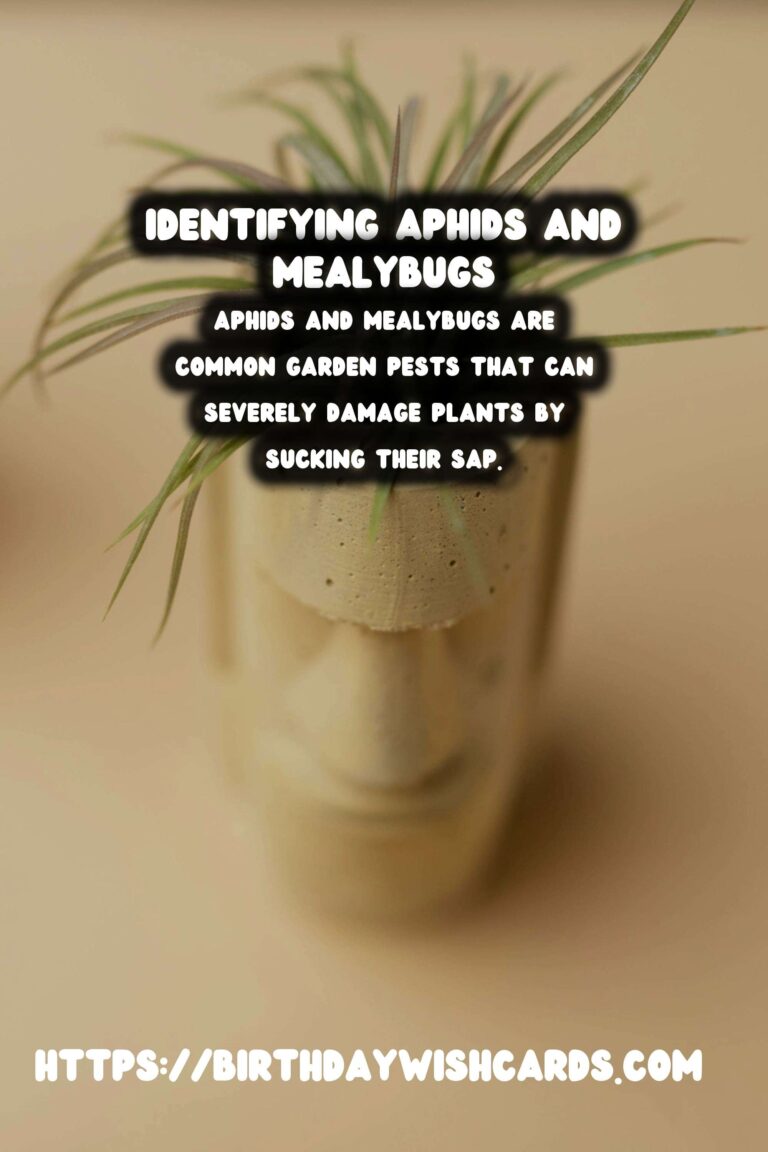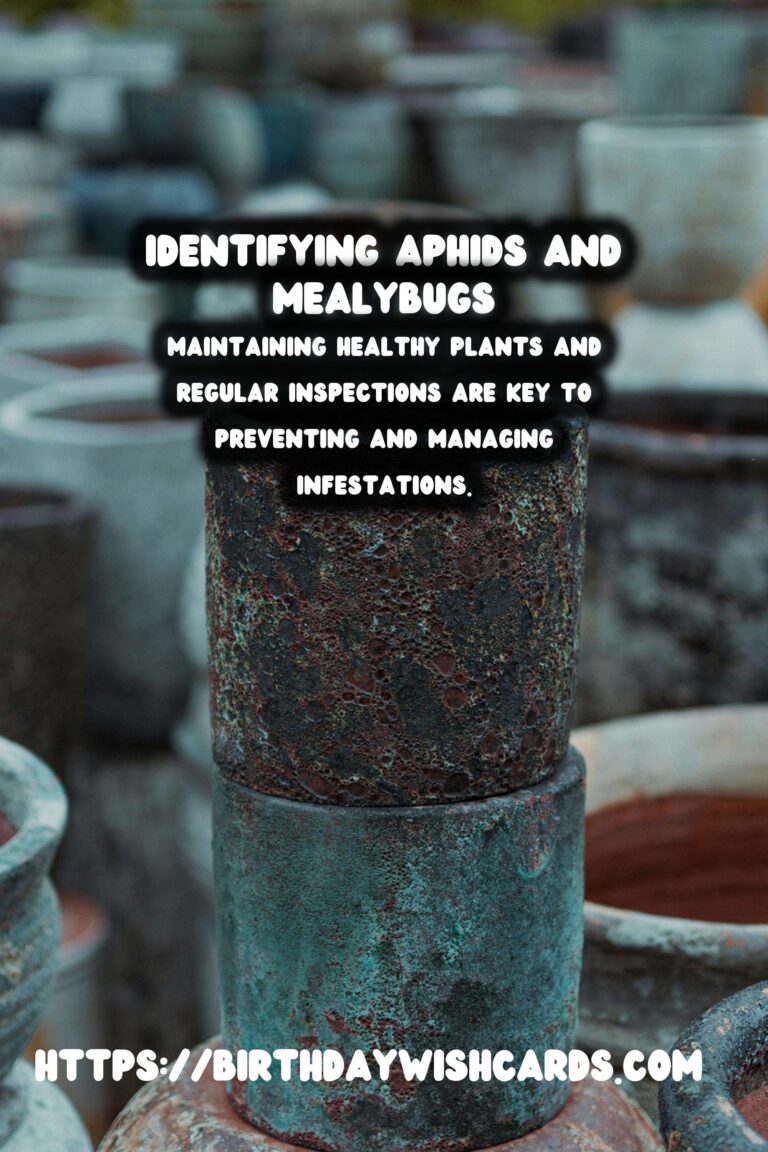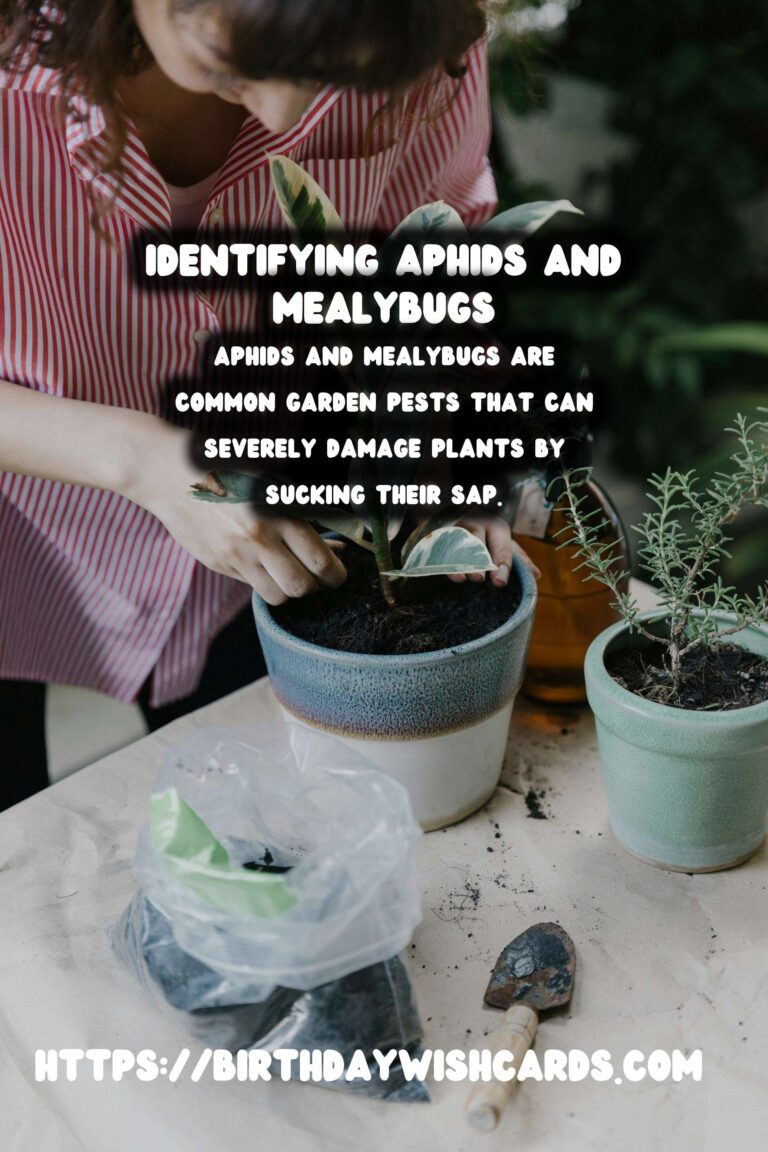
When it comes to nurturing a thriving garden, understanding the common pests that threaten your plants is crucial. Among the most notorious garden pests are aphids and mealybugs. These tiny insects can wreak havoc on your plants, sucking the life out of them and spreading diseases. In this article, we will delve into the characteristics of aphids and mealybugs, how to identify them, and effective methods to manage their presence in your garden.
Identifying Aphids
Aphids are small, soft-bodied insects that come in various colors, including green, black, brown, and pink. They are typically less than a quarter of an inch long and have pear-shaped bodies. Aphids are often found in clusters on new plant growth, where they feed by sucking the sap from the leaves and stems. This feeding process can cause leaves to curl, yellow, or distort. Additionally, aphids excrete a sticky substance known as honeydew, which can lead to the growth of sooty mold on plants.
Identifying Mealybugs
Mealybugs are small, white, cottony insects that often appear as fluffy masses on the stems and leaves of plants. They have a waxy coating that protects them from predators and environmental conditions. Mealybugs feed by piercing plant tissue and sucking out the sap, which can lead to wilting, yellowing, and stunted growth. Like aphids, mealybugs also produce honeydew, which attracts ants and encourages the growth of sooty mold.
The Impact of Aphids and Mealybugs
Aphids and mealybugs can severely damage plants by weakening them through sap extraction. This stress can make plants more susceptible to diseases and reduce their overall vigor and productivity. Furthermore, the honeydew produced by these pests can lead to secondary problems, such as ant infestations and fungal diseases. In severe cases, infestations can lead to the death of the plant.
Natural Control Methods
To manage aphid and mealybug infestations, gardeners can employ several natural control methods. One effective approach is encouraging beneficial insects, such as ladybugs and lacewings, which prey on these pests. Additionally, spraying plants with a mixture of water and mild soap can help dislodge and kill aphids and mealybugs. Introducing neem oil or insecticidal soap can also be effective in controlling these pests without harming beneficial insects.
Cultural and Mechanical Control
Maintaining healthy plants through proper watering, fertilization, and pruning can make them less susceptible to pest infestations. Regularly inspecting plants for early signs of aphid and mealybug presence can help manage populations before they become unmanageable. Mechanical removal, such as using a strong stream of water to knock pests off plants, can also be an effective method for controlling these insects.
Prevention Strategies
Preventing aphid and mealybug infestations is easier than dealing with an established problem. Planting resistant varieties, maintaining plant diversity, and rotating crops can help reduce the likelihood of infestations. Additionally, avoiding the overuse of nitrogen-rich fertilizers can prevent the lush, tender growth that aphids and mealybugs favor.
Conclusion
Understanding the characteristics and behaviors of aphids and mealybugs is essential for effective pest management. By employing a combination of natural, cultural, and mechanical control methods, gardeners can protect their plants from these damaging insects. With vigilant monitoring and preventive strategies, it’s possible to maintain a healthy, thriving garden free from the detrimental effects of aphids and mealybugs.
Aphids and mealybugs are common garden pests that can severely damage plants by sucking their sap. Aphids are small, soft-bodied insects that come in various colors and often form clusters on new plant growth. Mealybugs appear as small, white, cottony masses on plants and have a waxy coating. Both aphids and mealybugs produce honeydew, which can lead to sooty mold and attract ants. Natural control methods, including beneficial insects and neem oil, can help manage these pests. Maintaining healthy plants and regular inspections are key to preventing and managing infestations. 









#Gardening #PlantCare #Aphids #Mealybugs #PestControl




